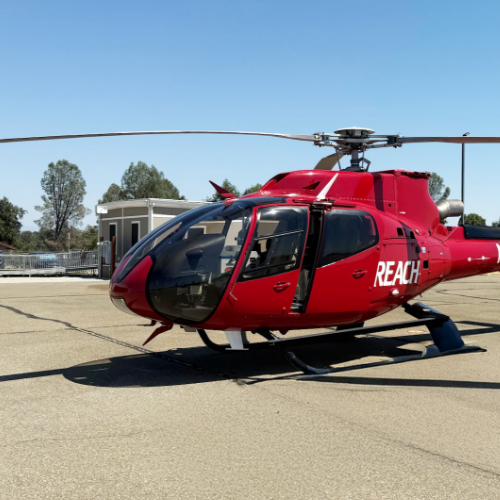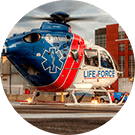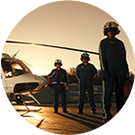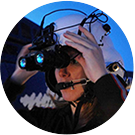Most people are familiar with a variety of aircraft, and many have even taken trips on airplanes or helicopters. If you have never been transported by air ambulance, you may not be as familiar with the important, life-saving differences in the aircraft our AirMedCare Network providers utilize in their mission to provide care at a moments’ notice. With over 320 bases across 38 states, our AMCN partners utilize both fixed wing and rotor wing (helicopters) in their missions depending on the needs of the patients and the unique capabilities of the aircraft.
The fixed wings are not as large as what you might typically travel on for your family vacation. In the fleet there are several models and types of fixed wing aircraft like the Beechcraft King Air C90B, Beechcraft King Air 200, and Learjet 45 to name a few. Based on the type of aircraft, up to two patients can be transported, and some aircraft contain an isolette for the treatment and transport of neonates.
Fixed Wing or Helicopter Ambulances within the AirMedCare Network have one thing in common — they are staffed by some of the best air ambulance crews who live and work in the communities they serve. From balmy Hawaii to the Rocky Mountains and the frozen tundra of Alaska, crews know the area and the community to provide excellent care to their patients. Through continued training and education, plus the addition of new life-saving equipment to the air ambulances, our network providers are more ready than ever to be there for patients at a moment’s notice with the right staff and equipment to help create a positive outcome for patients.
With AirMedCare Network membership, our members never receive a bill for the lifesaving treatment they receive in our providers’ air ambulances. While all calls for service are responded to with the same urgency, having the option of a household membership that provides financial peace of mind is priceless to our 3-million plus members.

Tips for Staying Healthy on a Cruise
Cruising blends adventure with relaxation while exploring the world. But with so many fellow travelers on board in close quarters, endless temptations at the buffet

Global Medical Response to Open First Dedicated Air Medical Base on Oahu
New 24/7 critical-care helicopter, arriving in the fall, will ease rising EMS demand HONOLULU, Hawaii (July 22, 2025) — When rush-hour traffic brings Northshore and

Winterize your Health—How to ensure better health when the temperatures drop.
As the last leaves of Autumn fall and a winter chill begins to set in across the country, you may be taking steps to winterize




